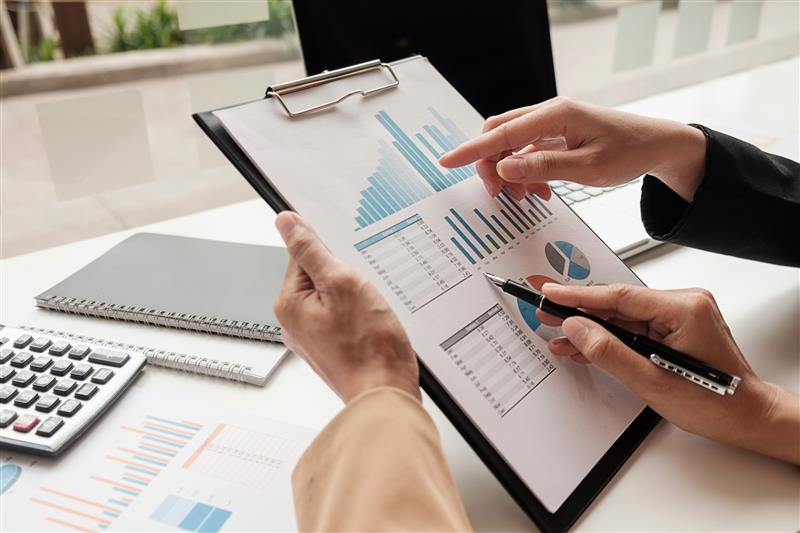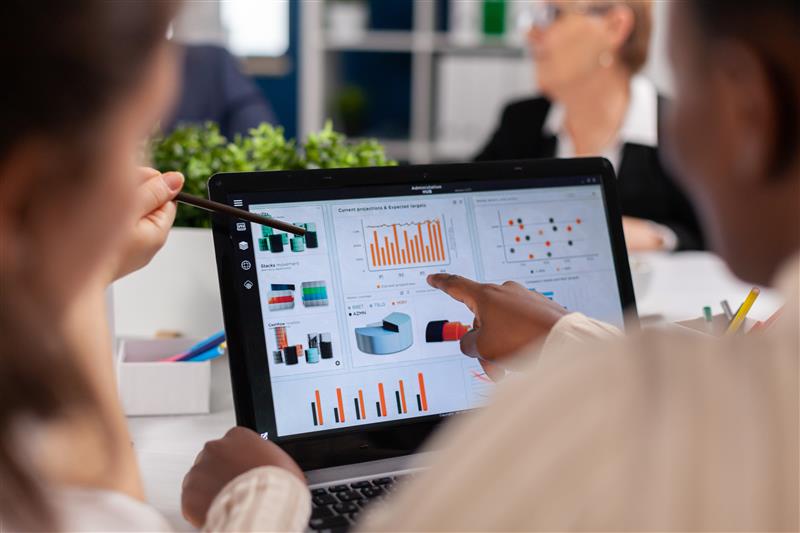The Current Scenario
One result of the Covid pandemic for organizations around the globe is the period known as “The Great Resignation,” where people left roles to seek other opportunities, citing burnout, lack of flexibility, work-life balance, and feeling undervalued. And now, with the current global situation being affected by the crisis in Ukraine, the rising cost of living, and spiraling fuel costs, people are looking to re-engage and re-enter the job market. Around 2.6% of the people are returning from their resignations because they feel uncertain about the future. |
This presents an opportunity for companies to attract new talent vital for organizational growth and maintain the status quo – so, how do we recruit and retain our people in this scenario? What skills are required as we move into this new world of work?
Are New Skills Required?
As per the World Economic Forum, the future of jobs report states that –
- 85 million jobs are expected to be displaced by 2025.
- 97 million new roles are likely to be created during this period; displaced workers will need to be reskilled.
- 40% of workers will need reskilling of six months or less.
How do we scale our reskilling efforts and enable our teams to do their jobs “as normal”? If the average time to reskill is 3-6 months, it is an obvious priority for organizations to focus there.
So, how do we respond?
If jobs and roles are changing, and we’re at risk of losing people, understanding what impacts us as an organization is vital and, more importantly, how we respond.
- Do we increase the compensation (pay, benefit, etc.)?
- Offer flexible work choices (home, office, hybrid) – is that compatible with our business?
- Can we get a holistic view of our workforce (hire to retire)?
- How do we keep our current employees from leaving?
- Look within – what are the gaps?
- Look into upskilling potential employees
- Can we make better hiring decisions?
What is a Skill gap analysis?
A skill gap analysis is a method to identify the gaps in the skills in the organization and take relevant actions to bridge them—a technique to improve the company’s performance and stay competitive in the long run.
Simply put, a skills gap refers to the difference between the skills required to carry out the job efficiently and the actual skills an employee possesses.
Skills needed – Skills possessed = Skill Gap
Assessing where you are currently is the first step toward predicting and preventing the skill gap. The issue with the skills gaps is that people tend to think it is hard. However, the key is to take small steps – start with the group level and move slowly on from there; you can evolve into doing a complete skills gap analysis for an organization.
Skill gap analysis at different levels –
- Industry
- Team or Project
- Department
- Organization
- Industry
When you talk through skills gap analysis, people tend to stop at the individual, team, or project levels. But it would be best if you went to the department, organization, and industry level – simply put, when you look at companies that do not survive against the competition, it is because they are not looking at the skills at the industry level.
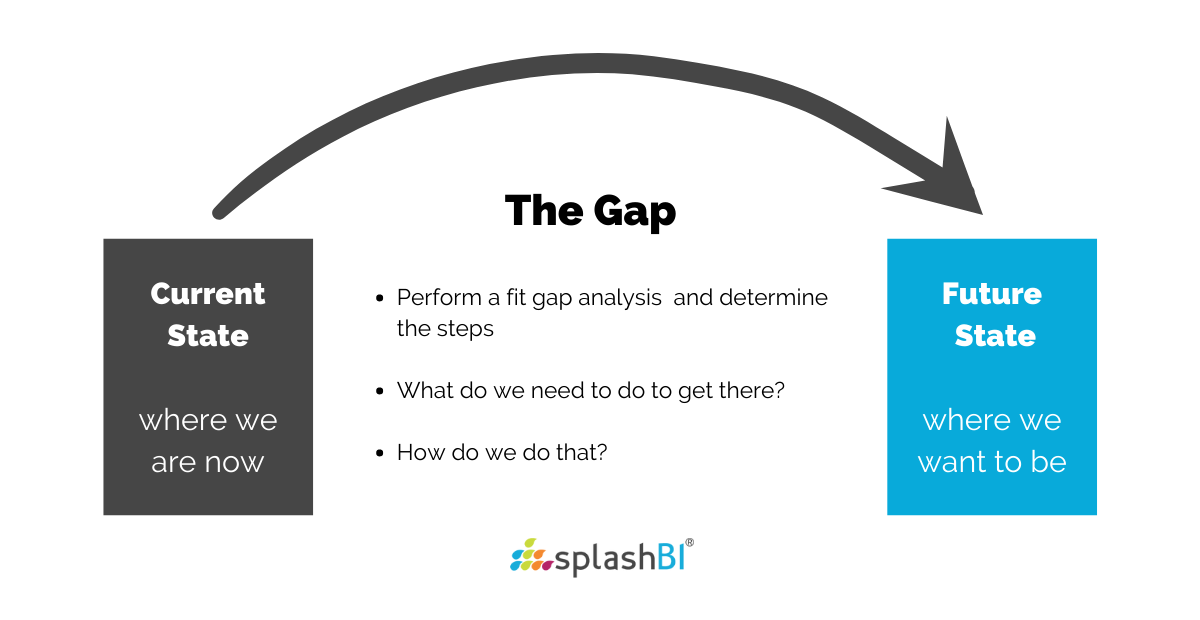
Going from the current state to the future state, you need to identify where you currently are and map how to get there. To do it at the in-depth level, start at the lowest level, like a project or a team, and then go down the steps to the industry level to take the best actions to survive in this competitive world with rapid changes forcing us to adapt.
Why do we need a Skill Gap Analysis?
When and How to Conduct a Skills Gap Analysis
Apart from two obvious reasons that are improving productivity and revenue, skill gap analysis helps to
- 1. Keep up with Digital Transformation
- 2. It helps HR to have a better understanding of the workforce’s current skills.
- 3. Identifies trends for Better ROI
- 4. Invests in Employee Development and Learning.
- 5. Suggested context- Enables better employee hiring and recruitment plan, which is a crucial aspect of talent management in HRM
- 6. Career Pathing
- 7. Edge over competitors
Sample Skill Gap analysis template at Different Levels
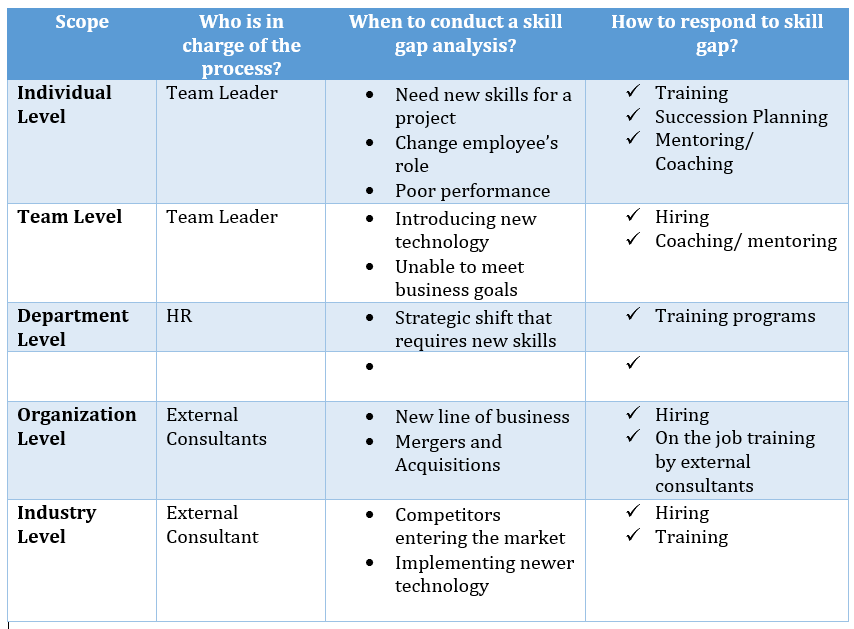
Consideration for Skill gap analysis
- Identify critical skills
- Analyse the skills required in the future
- Prioritize the talent strategies
- Streamline jobs and roles
- Combining the right mix
- Guide business leaders
- Edge over competitors
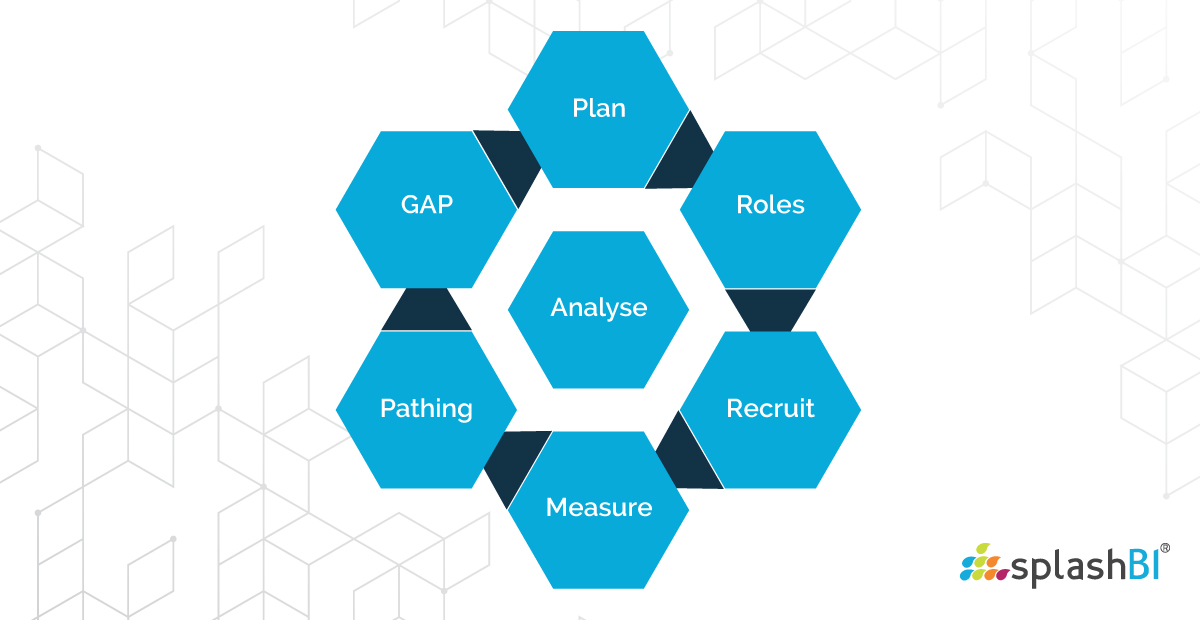
Assess the skills and skill levels available to you right now by conducting a skills mapping exercise. Meet with business unit leaders to learn about current strategic plans, significant priorities, and critical initiatives, as well as trends that will ultimately affect the workforce
As you start to plan, move to understand your roles; break down your jobs into specific functions and the guidelines to succeed in that role. This way, even without a strict competence framework in place, you can use “ad-hoc” skills to start planning how to improve your teams and potentially open up career pathing opportunities for your existing employees. If I can see what is needed to succeed, I might start to think about new roles, which increase employee retention.
If we do not have the relevant skills, and nothing comparable exists internally, then let’s recruit the right people around those requirements. By adopting people analytics, organizations can measure the effectiveness of development and upskilling efforts, gaining insights into productivity and the overall impact on organizational capability. If you start seeing new gaps, it is a sure-fire way to start planning more effectively and efficiently!
As we can see, it’s a cyclical, ongoing effort, but without the gap analysis in the middle, you will fall short of proving what you need to do in the short and long term.
Solution – SplashBI for HR, Our People Analytics Platform
HR has been guilty of wasting time and effort on irrelevant learning that won’t be used to further the business or the employee’s career. By creating a detailed description of every skill and building an inventory of critical skills with an eye toward revising and updating it regularly will allow an organization to sense changes to critical skills needs promptly and adjust.
It is also essential to improve the Adjacent skills along the way. Adjacent skills are skills closely related to a critical skill and typically appear alongside it in employee skills profiles. It can be a worthwhile exercise to cast your net wider to ensure you become more agile and proactive in managing your key resource – your people!
SplashBI for HR people analytics monitor overall organizational health for every leader, job type, department, and location. Our People Intelligence lets you drill into the details – from Macro to Micro. Get meaningful insights from your data from multiple sources.
Our skill gap analysis dashboard showcases how you can increase employee engagement, optimize the skills usage, drill down into the data, and potentially find the right fit for some of the roles and move them internally. It will help you reduce the recruitment cost and the onboarding and training time, thus maximizing the skills very quickly.
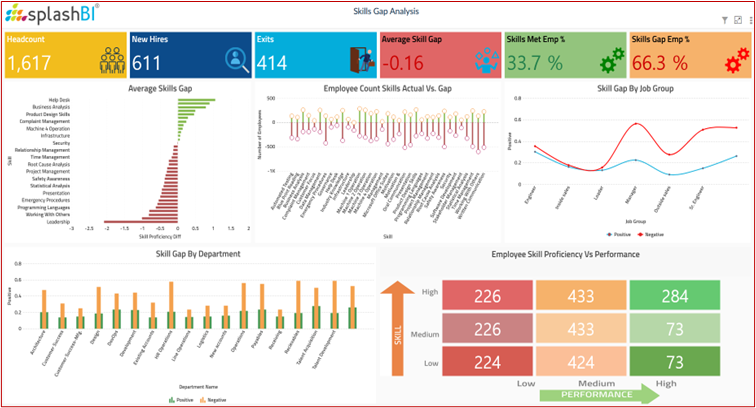
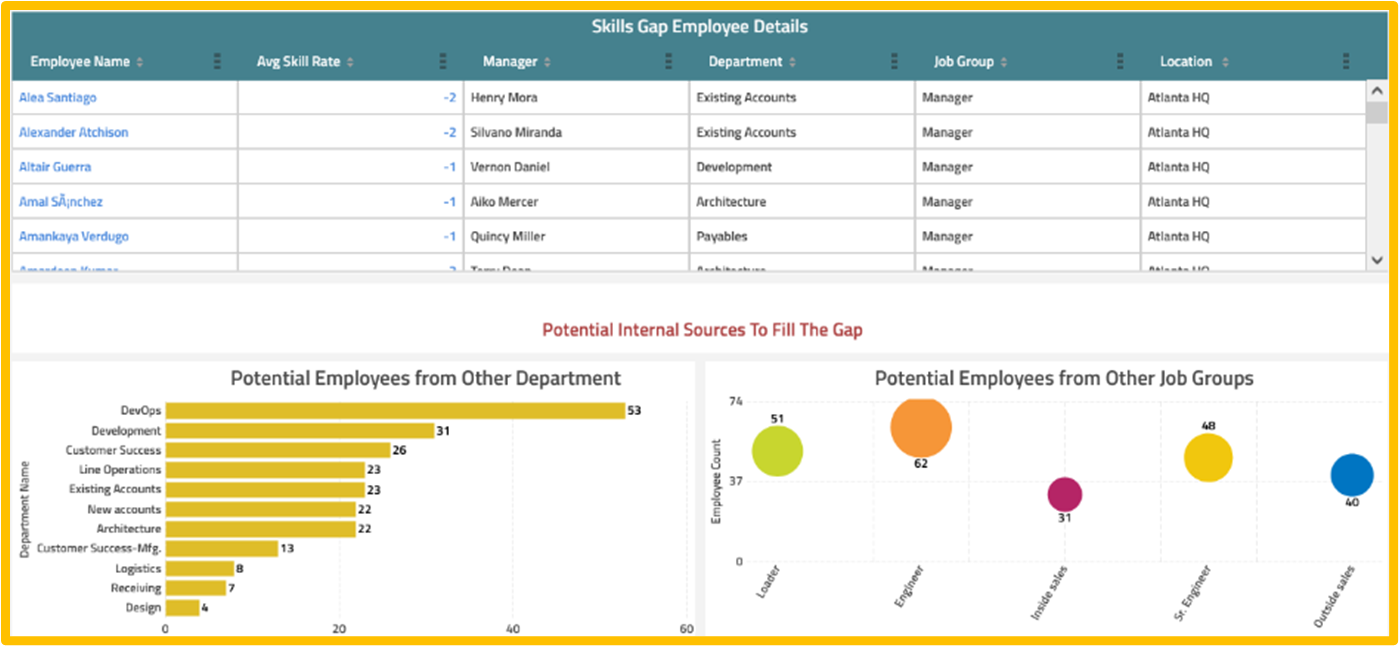
These dashboards help you see whether your employees are falling in red or green, or yellow and how you can make sense of all these different areas of data points. Make the best sense of the data sets and focus on getting better results related to your business outcomes.
Still not sure how SplashBI for HR benefits your organization? Contact us today, and one of our experts will be happy to address your questions and challenges!









